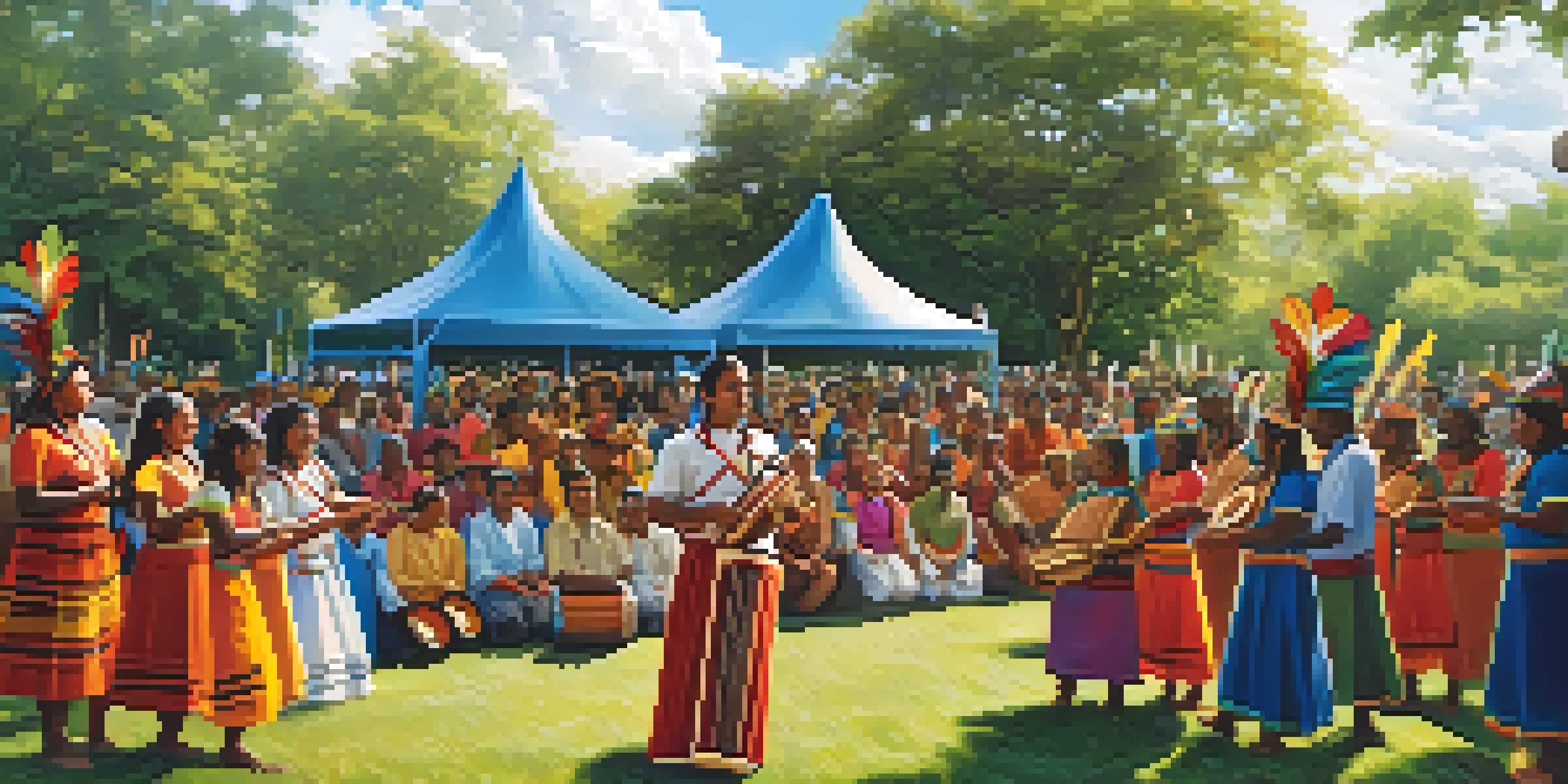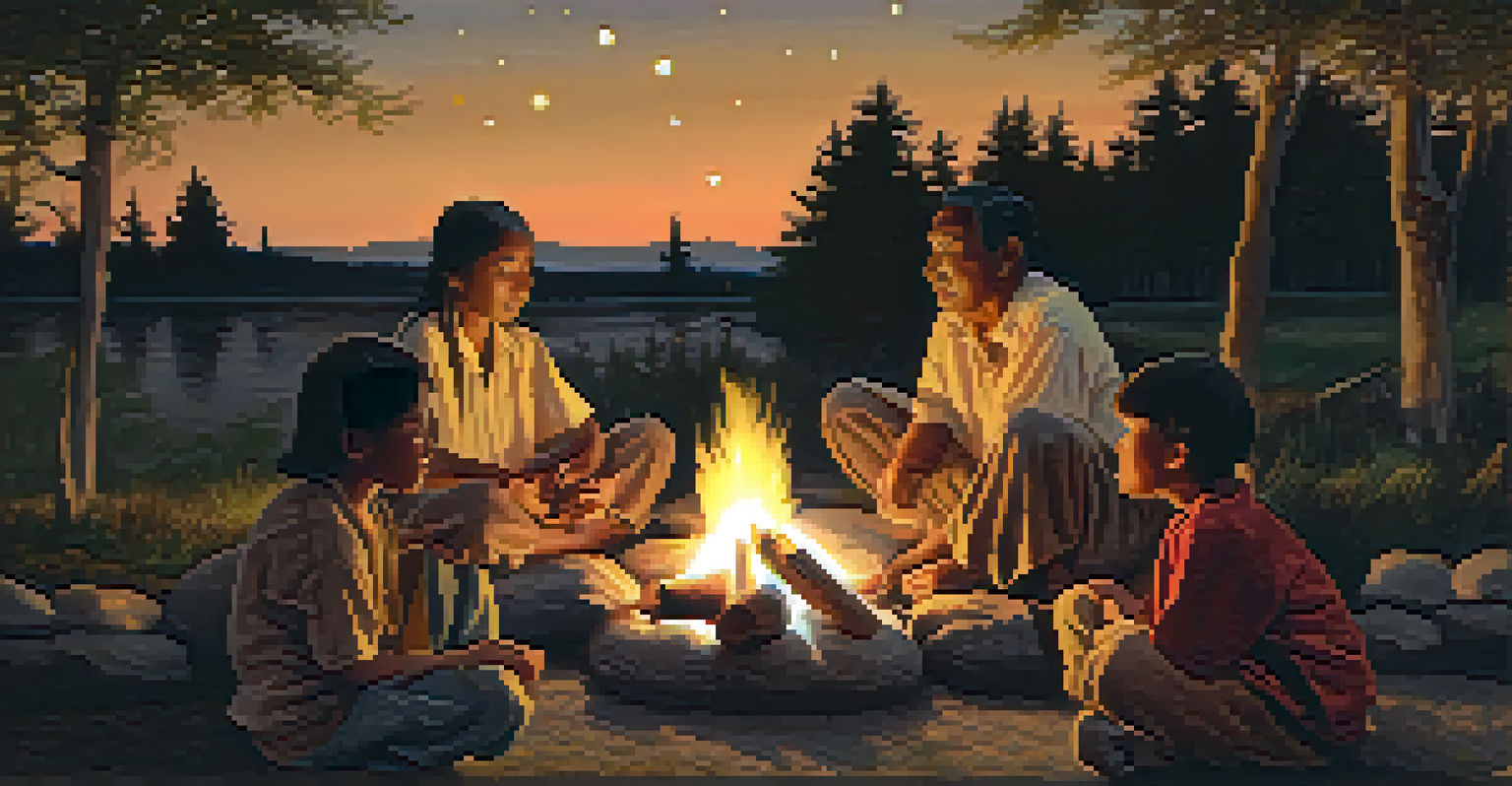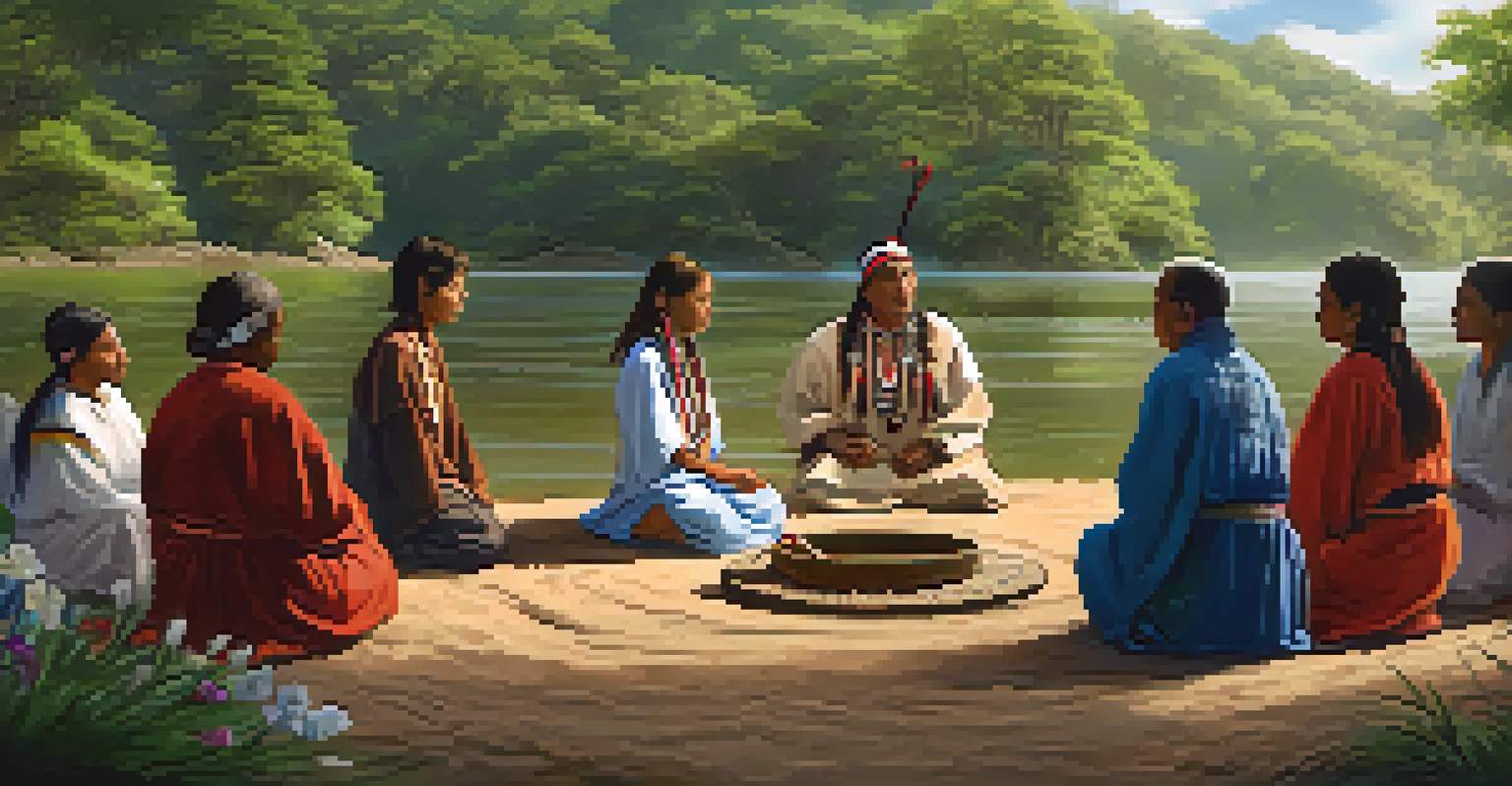Exploring the Role of Music in Indigenous Cultures Worldwide

Music as a Cultural Identity in Indigenous Societies
Music serves as a vital expression of cultural identity for indigenous peoples. It encapsulates their history, values, and unique worldviews, often passed down through generations. For many tribes, songs tell stories of creation, survival, and community, helping to solidify a sense of belonging among members.
Music is the shorthand of emotion.
For instance, the Navajo Nation uses music in ceremonies to invoke healing and connection with their ancestors. Traditional songs are woven into the fabric of their communal life, reinforcing their identity and resilience. This connection to music allows individuals to feel grounded in their heritage, even in a rapidly changing world.
Moreover, music acts as a bridge between generations, allowing elders to share wisdom and traditions with younger members. In this way, music is not just entertainment; it's a living archive that preserves and promotes cultural continuity.
Rituals and Ceremonies: The Power of Indigenous Music
Indigenous music plays a crucial role in various rituals and ceremonies, marking significant life events. From birth to death, music guides these transitions, enriching the spiritual experience. For example, the Maori of New Zealand incorporate songs (waiata) into their initiation and funeral ceremonies, emphasizing the importance of life cycles.

These musical expressions often invoke the presence of ancestors and spirits, fostering a deep spiritual connection. In many cultures, the act of singing or drumming is believed to summon the energy needed for rituals, making the music an essential element of the ceremony. This intertwining of music and spirituality highlights its profound impact on community life.
Music as Cultural Identity
Indigenous music embodies cultural identity, preserving history and values while fostering a sense of belonging.
Through these rituals, music not only facilitates healing and connection but also strengthens communal bonds. Participants often feel a sense of unity and shared purpose, reinforcing the collective identity of the group.
Storytelling Through Music: Indigenous Narratives
Storytelling is a cornerstone of indigenous cultures, and music plays an integral role in this practice. Songs often carry narratives that convey moral lessons, historical accounts, and cultural values. For example, the Inuit people use throat singing as a means of storytelling, blending vocal techniques to create a unique soundscape that reflects their environment.
In every culture, music is a way to express human emotion, and it has the power to unite and heal.
These musical narratives serve not only to entertain but also to educate younger generations about their heritage. Each song can act as a mnemonic device, helping individuals remember historical events and cultural practices. In this way, music becomes a powerful tool for preserving and transmitting knowledge.
Additionally, the use of music in storytelling fosters a sense of community as people gather to listen and participate. This shared experience strengthens communal ties and ensures that the stories of their ancestors continue to resonate within the culture.
Music as Resistance: Empowering Indigenous Voices
In many cases, music serves as a form of resistance against colonization and cultural erasure. Indigenous artists often use their platforms to raise awareness about social injustices and advocate for their rights. For instance, the hip-hop movement among First Nations in Canada has become a powerful medium for addressing issues like land rights and cultural preservation.
Through music, indigenous artists reclaim their narratives and assert their identities in a world that often marginalizes them. This empowerment through music not only uplifts individuals but also inspires collective action within communities. Songs become anthems of resilience, fostering unity and pride among indigenous peoples.
Role in Rituals and Healing
Music plays a vital role in rituals and healing practices, enhancing spiritual connections and community bonds.
Moreover, the global reach of music allows indigenous voices to connect with wider audiences, promoting understanding and solidarity. By sharing their stories through music, they challenge stereotypes and foster appreciation for their cultures.
The Role of Music in Indigenous Education
Education in indigenous cultures often incorporates music as a fundamental component. Traditional songs and dances are utilized to teach younger generations about their history, language, and cultural practices. This experiential learning approach engages children and fosters a deeper connection to their heritage.
In many communities, elders take on the role of educators, using music to convey lessons and values that are essential for cultural continuity. For example, the Lakota people use songs to teach respect for nature and the significance of their relationship with the land. Such teachings are crucial in instilling a sense of responsibility towards their environment.
Furthermore, incorporating music into education helps bridge cultural gaps, allowing indigenous youth to develop a strong sense of identity. As they learn about their roots through song, they gain confidence in their cultural heritage and a greater understanding of their place in the world.
Healing Through Music: Traditional Practices
Music is often seen as a healing force in many indigenous cultures, used in various traditional healing practices. Shamans and healers may employ songs or drumming in rituals to restore balance and promote well-being. For instance, the Sami people of Northern Europe use music in their traditional healing ceremonies to connect with the spiritual world.
These healing songs are believed to carry specific vibrations that can affect the physical and emotional states of individuals. By invoking these sounds, healers aim to guide patients towards recovery, both spiritually and physically. This connection between music and healing underscores the holistic approach of indigenous medicine.
Music as Resistance and Empowerment
Indigenous music serves as a powerful form of resistance, empowering communities to reclaim narratives and advocate for rights.
Moreover, the communal aspect of music in healing rituals fosters support and solidarity among participants. As community members come together to sing and support the healing process, they reinforce their collective strength and resilience.
The Future of Indigenous Music: Challenges and Opportunities
As we look to the future, indigenous music faces both challenges and opportunities in an ever-evolving world. Globalization and technological advancements present risks of cultural dilution, but they also offer platforms for indigenous artists to share their music widely. Social media and streaming services can amplify indigenous voices, allowing them to reach global audiences.
At the same time, it's crucial for indigenous communities to maintain control over their musical heritage. Protecting traditional practices and ensuring they are not appropriated is vital for cultural integrity. Continued advocacy for intellectual property rights and cultural respect will play a significant role in safeguarding indigenous music.

Ultimately, the future of indigenous music lies in the balance of embracing modernity while honoring traditions. By fostering spaces where indigenous voices can thrive, we can ensure that the rich tapestry of their musical heritage continues to inspire and educate for generations to come.